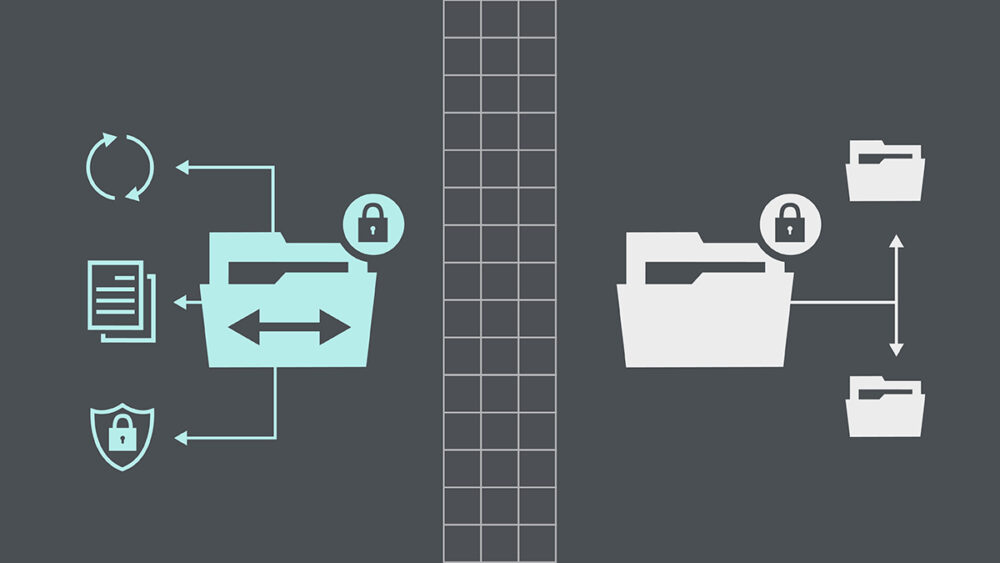In the digital realm, the movement of data is akin to the lifeblood of the internet, pulsating through cables and airwaves, connecting businesses, individuals, and systems. Yet, as this data traverses the vast networks, it becomes vulnerable to interception, tampering, and theft.
Protecting data in transit is not just a technical necessity but a critical aspect of maintaining privacy, security, and trust in our digital interactions.
Secure File Transfer Protocol (SFTP) Overview
Secure File Transfer Protocol, commonly known as SFTP, serves as a robust method for transferring files with a shield of security. It’s a network protocol that provides file access, transfer, and management over a reliable data stream.
Born from the Internet Engineering Task Force (IETF) SECSH working group, SFTP was designed as an extension of the Secure Shell protocol (SSH) version 2.0, aiming to offer secure file transfer capabilities. For a deeper insight into secure file transfer solutions, visit https://www.goanywhere.com/solutions/secure-ftp.
SFTP’s architecture allows for a myriad of operations on remote files, making it more akin to a remote file system protocol. It’s not merely about moving files from point A to point B; SFTP also facilitates resuming interrupted transfers, directory listings, and remote file deletion.
It’s platform-independent, unlike its predecessor SCP (Secure Copy Protocol), and it’s commonly implemented across various systems, providing a universal solution for secure file management.
SFTP in Action

Source: kinsta.com
Imagine SFTP as a secure tunnel where your files can travel without the prying eyes of digital miscreants. It operates over a secure channel, typically SSH, ensuring that the server has authenticated the client and that the client’s identity is known.
This setup means that before any file transfer begins, there’s a solid foundation of trust between the communicating parties.
SFTP’s reliance on SSH means it inherits SSH’s robust encryption and authentication mechanisms. This protocol doesn’t just slap a padlock on your data; it ensures that only the intended recipient has the key. It’s like sending a letter in a locked briefcase rather than a transparent envelope.
Advantages of SFTP
The security features of SFTP are its crowning glory. By encrypting data, it ensures that sensitive information remains confidential. This encryption is not just a simple lock but a complex cryptographic system that even the most skilled hackers find formidable to crack.
Using SFTP is like having a personal bodyguard for your data. It significantly reduces the risks associated with data transfer, ensuring that files arrive untampered and only at the intended destination.
This protection is crucial in an era where data breaches can lead to significant financial and reputational damage.
In many industries, regulatory frameworks dictate stringent data protection standards. SFTP helps organizations comply with these regulations, providing a transfer protocol that meets the necessary security benchmarks. It’s not just about avoiding penalties; it’s about upholding a standard of trust with clients and stakeholders.
Implementing SFTP
Implementing SFTP begins with setting up a server that’s designed to handle the SFTP protocol. This process involves configuring the server software to listen on the standard port 22, although alternative ports can be used for added security.
The setup also includes establishing secure authentication methods, such as public key authentication, and defining user access permissions to ensure that only authorized individuals can access the data.
On the flip side of the server is the SFTP client, which must be chosen with care. The right client will seamlessly integrate with your server setup, support the necessary encryption standards, and offer a user-friendly interface.
It’s not just about the technical capabilities; it’s also about ensuring that the client can be smoothly incorporated into your existing workflows.
SFTP vs. Other Protocols

Source: blog.axway.com
While FTP is the grandfather of file transfer protocols, it lacks the inherent security features that are non-negotiable in today’s cyber landscape. FTPS offers a layer of security by adding SSL (Secure Sockets Layer) or TLS (Transport Layer Security), but SFTP goes a step further by integrating file transfer and security into a single, streamlined protocol.
Compared to HTTP/S, which is primarily for web content access, SFTP is specifically designed for secure file transfer, offering more robust features for this purpose.
SFTP stands out from the crowd with its ability to ensure secure transfers through encrypted sessions, robust authentication mechanisms, and advanced file management capabilities. It’s not just about encrypting the data; it’s about providing a comprehensive ecosystem for secure file management.
Best Practices
To maintain the integrity of SFTP connections, it’s essential to use strong encryption algorithms and keep all software up to date. Regularly updating the SFTP server and client ensures protection against known vulnerabilities.
Additionally, using strong, unique passwords and regularly rotating SSH keys can help prevent unauthorized access. Regular maintenance of SFTP servers is crucial.
This includes monitoring for any unusual activity, performing regular backups, and ensuring that the server software is up to date with the latest security patches. A well-maintained server is less vulnerable to attacks and ensures reliable service.
Challenges and Considerations
While SFTP is a secure and reliable protocol, it’s not without its challenges. The setup and configuration can be complex for those without technical expertise. Additionally, transferring large files can be time-consuming due to the encryption and decryption processes.
There’s also the consideration of compatibility with existing systems and ensuring that all parties in a data transfer have the appropriate setup.
To overcome these challenges, businesses can invest in user-friendly SFTP solutions that simplify the setup process.
They can also opt for SFTP servers that offer performance optimizations for large file transfers. Ensuring cross-compatibility and providing training for users are also essential steps in mitigating potential issues.
Future Trends

Source: sftptogo.com
The future of secure file transfer may see the integration of emerging technologies like blockchain, which could offer even more secure and transparent ways to track and manage file transfers. Machine learning algorithms could also play a role in detecting and responding to security threats in real-time, further enhancing the security of SFTP protocols.
As cyber threats evolve, so too will the technologies to combat them. SFTP is likely to see advancements in encryption technologies, making it even more secure. We may also witness a greater push towards automation in SFTP processes, reducing the potential for human error and increasing efficiency.
Conclusion
SFTP stands as a bastion of data security in an increasingly vulnerable digital landscape. Its importance cannot be overstated, as it provides a secure method for transferring files that is crucial for maintaining the confidentiality and integrity of sensitive information.
This article has provided a thorough exploration of SFTP, from its technical underpinnings to its practical applications, challenges, and future developments. It underscores the protocol’s significance and enduring relevance in safeguarding data in transit.


















